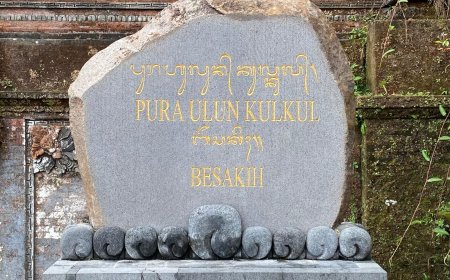The Majesty of Pusering Jagat Temple in the Spiritual Vortex of Bali
“Island of a thousand temples”, that is the nickname that often marks a small island called Bali. How could it not be, the island of Bali, which is famous for its enchanting natural beauty, has more than just a stretch of stunning beaches and extraordinary natural beauty, this island is also home to various sacred sites that are amazing and full of beliefs and deep meaning. One of the stunning holy sites in Bali whose existence is still maintained to this day is Pura Pusering Jagat, which literally means “Center of the Universe”.
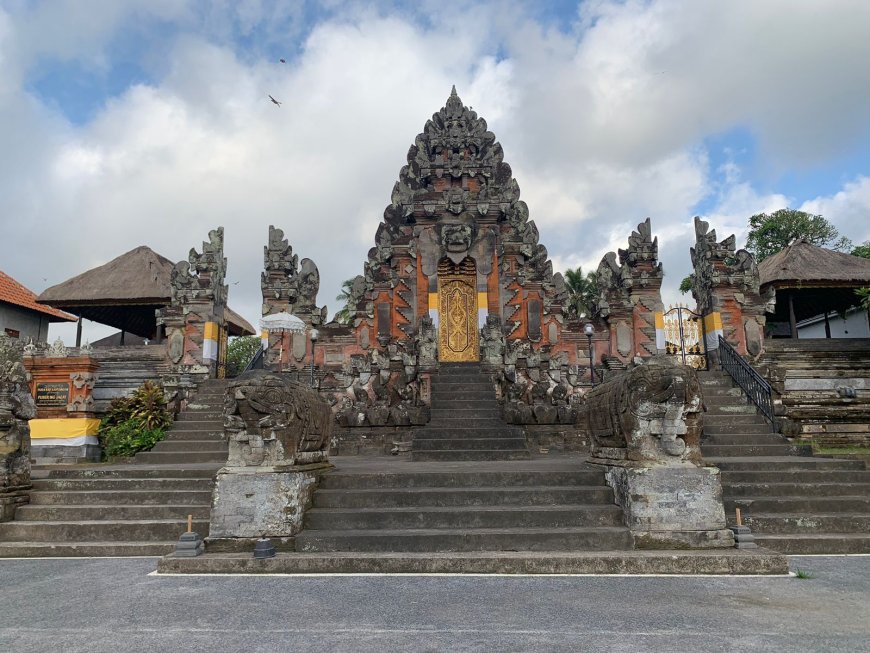
Located in Pejeng Village, Tampaksiring District, Gianyar Regency, Pura Pusering Jagat is one of the most important religious sites in Bali. The uniqueness and beauty of Pusering Jagat Temple creates an unforgettable experience for anyone who enters it. It only takes about an hour from the heart of Denpasar, our tiredness will be paid off by witnessing the majesty of the temple building which is part of the Sad Kahyangan Temple in Bali which is located in the center. Not only does it store the historical values of its founding, ancient relics and architectural beauty, Pusering Jagat Temple also has a panoramic beauty that is no less pleasing to our eyes. So what is the true history of the Pusering Jagat Temple?
The exact history regarding the construction of this temple may be difficult to find due to the lack of written records at that time. However, like many other temples in Bali, Pura Pusering Jagat is also believed to have deep roots in the Hindu belief system. This temple is thought to have existed since the 10th century, when Hinduism began to enter the island of Bali from Java. This relates to the location of the temple in Pejeng Village, where in the past Pejeng Village was considered the center of the Ancient Balinese Kingdom, a place for kings to bestow all their protection and compassion on their people, like a protective umbrella that protected anyone under it. This temple, etymologically, has the name “Pusering Jagat” is able to express its meaning beautifully. The word “Puser” which means center and “ing” which refers to place, combined with the word “Jagat” which means world or earth, gave birth to a term that carries a magical meaning as the center of the whole world. However, in ancient texts, Pura Pusering Jagat also has another name, known as Pura Pusering Tasik, which means “Center of the Ocean”. This name reminds the Hindu community of the epic story of Adi Parwa, where the gods, detya and rakshasas faced a hard struggle to find “Tirtha Amertha” or the water of life in the middle of the ocean called Ksirarnawa through the turning of Mount Mandaragiri.
Apart from this fragment of the story, Pura Pusering Jagat, which maintains its existence as a holy place for Hindus, especially in Bali, believes that this temple is a place where the Lord Shiva resides and is worshiped as a manifestation of the Almighty God who has a key role in Hindu cosmology. Pusering Jagat Temple functions as a place for various religious ceremonies and celebrations such as “Piodalan” which is the temple's annual ceremony and also the Melasti ceremony or purification ceremony. In Lontar Kusuma Dewa, Pura Pusering Jagat is also described as a holy place where Batara Amangkurat is worshiped. This means that at Pura Pusering Jagat, God is respected as a guide for those who hold positions in managing people's lives. Leaders will serve with full dedication to those they lead, especially if those who hold power also have strong religious beliefs. Because without strong spirituality, rulers can freely abuse their power over the people they lead. That is the belief that is created and develops warmly in society.
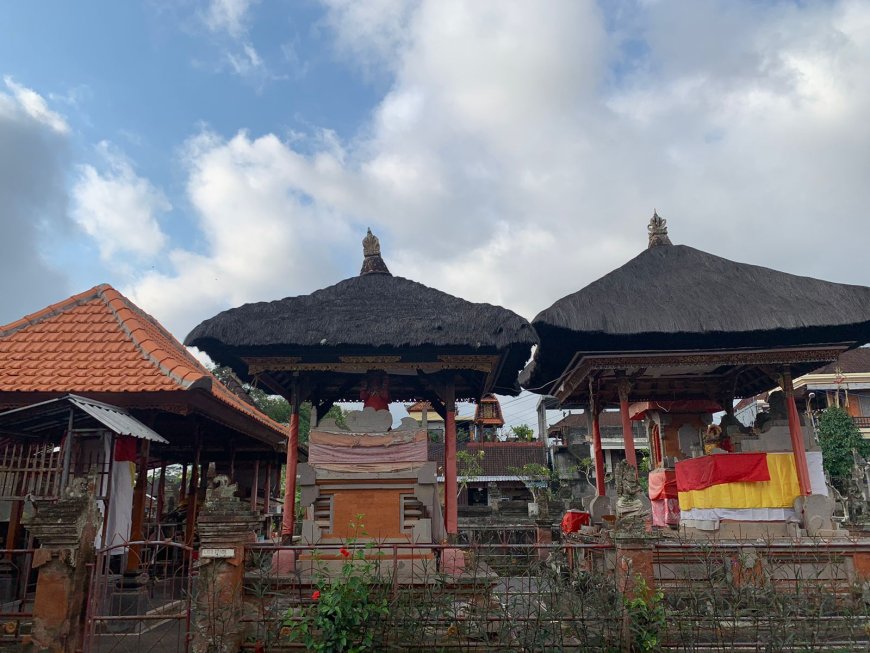
Talking about temples, the Hindu community in Bali has a special concept regarding the division of temple areas known as “Tri Mandala” which means three places or areas for carrying out ceremonial activities in a temple, including Nista Mandala, Madya Mandala, and Utama Mandala. This also applies to the central temple of the world, Pusering Jagat Temple, where when we arrive at the first area we will encounter is the Nista Mandala or Jaba Sisi area. Once we arrive we will be face to face with “Pemedal” or the first entrance to the temple by climbing several stairs. The gathering place for the “pamedak” or Hindu community, both for carrying out “parum” and other community activities called “Wantilan” will welcome us as soon as we arrive at the Jaba Pura yard, located right to our right stands a large building where the old community members meet. to young people who witness the close ties of brotherhood and bonds of togetherness. Then on the left side we will see a sacred shrine building which is identical to the red cloth called Ratu Pande. It doesn't stop there, if we look closely there is a place in the form of a arena or similar to a performance arena right behind the shrine of Ratu Pande complete with steps descending to the center point at the bottom of the area.
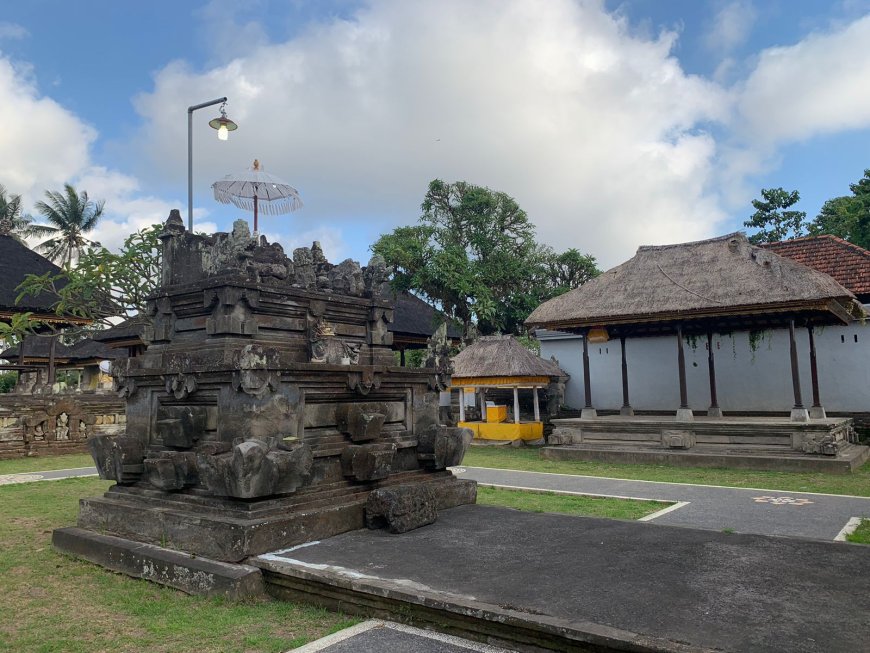
The gaze seems to be riveted and focused on the magnificent building which stands tall with steps and a pair of statues resembling large elephants right in the middle of Pemedal or the entrance to the central area of the temple. Like a guard who is alert to watch on the right and left when your feet are about to move up the stairs. Nista Mandala or Jaba Tengah, that is the term used to mark the central area of the temple. In this area we will be greeted by a “pelinggih statue” building right in the middle of the Nista mandala yard which is parallel to the middle pedal. There are also two hall buildings extending far apart on the left and right sides of the yard. An atmosphere of calm begins to be felt as we walk and allow our gaze to glance around and observe the surrounding area of the central jaba of Pusering Jagat Temple.
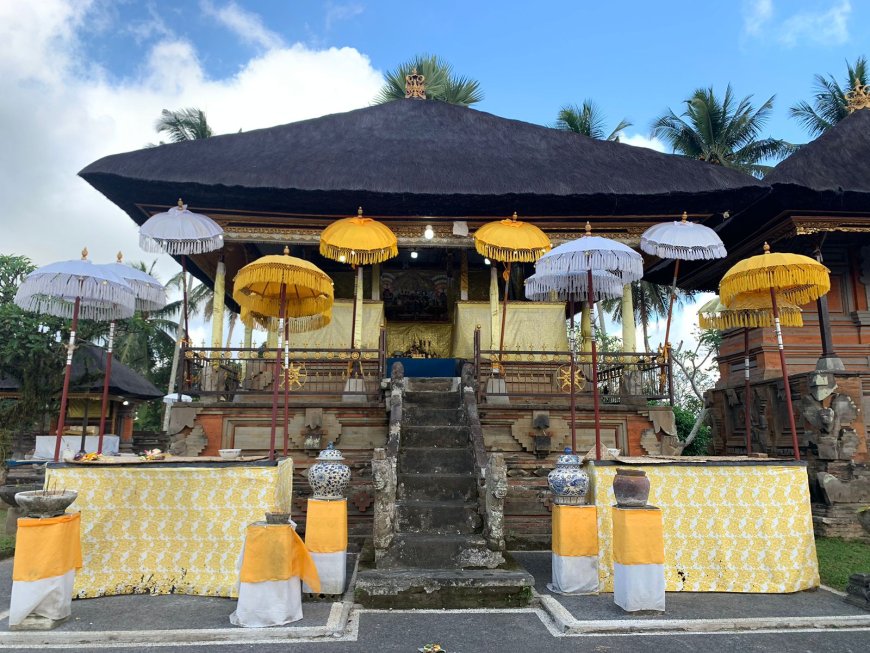
The footsteps leading past the small Pemedal of Jaba Tengah stopped and our eyes seemed to be enchanted by the beauty of the sacred pelinggih buildings that surround various corners with the beauty of the sweet architecture surrounding the garden flowers. Truly like a paradise like no other, this is the peak point of Pura Pusering Jagat, Utama Mandala. This is where questions and answers stir unrivaled in our hearts regarding the nuances and sacred atmosphere of historical heritage as well as our amazement at the masterpieces of our predecessors, as blessings from God in their manifestation as Gods and Goddesses who are revered and exalted at Pusering Jagat Temple. The utama mandala, in the Hindu tradition, is this area which functions as a place for the main ceremonies of religious activities to worship and show devotion to the Almighty God who has blessed and helped his people. The pelinggihs in the main area of utama mandala are very neatly arranged with ancient architecture that remains stable and sustainable combined with the modernization order by society, witnessing the existence of a harmonious relationship between humans and their creator.

The “Lingga Yoni statue” as a symbol of “Purusa Pradana” in Hindu religious teachings is arranged on a pelinggih called pelinggih gedong purusa in the main mandala of the temple. The Lingga Yoni statue is realized with very explicit symbolism, namely depicting male and female genitals. The existence of the Lingga Yoni statue at this location has a deep meaning as a tribute to Purusa and Pradana with the hope that the two will unite. It is considered a symbol of fertility and the source of life for all creatures inhabiting the earth.
Another unique thing about Pura Pusering Jagat is the concept of pluralism which is reflected in the various statues which are symbols of each sect in the temple. This is a concrete example of how ancestors and holy teachers in the past were able to accommodate various local beliefs and sects that developed in the Ancient Bali Kingdom. Harmonization in diversity of beliefs is united side by side in the temple area.
Moving on to the east side of the main mandala, there is a lake without water called "Telaga Maya". If you look at it with the naked eye, Telaga Maya is just an ordinary, dry lake, unlike lakes in general. But who would have thought that this lake holds a sacred and magical story that it is said that if the ceremony is carried out by saying "Pakelem", namely sejajen as a form of devotion to the creator who is the ruler of the seas in Telaga Maya, then the pakelem will penetrate the waters of Nusa Penida as if it is a sign that Pura Pusering Jagat is carrying out the piodalan. It's an unexpected miracle, isn't it? Not only that, another story also happened when ducks were released into Telaga Maya after a ceremony as a piodalan offering. The ducks are seen swimming and flapping their wings as if they are in water, even though in fact the lake does not contain water and is even dry. This is the belief among the people that Telaga Maya is truly a lake full of water.
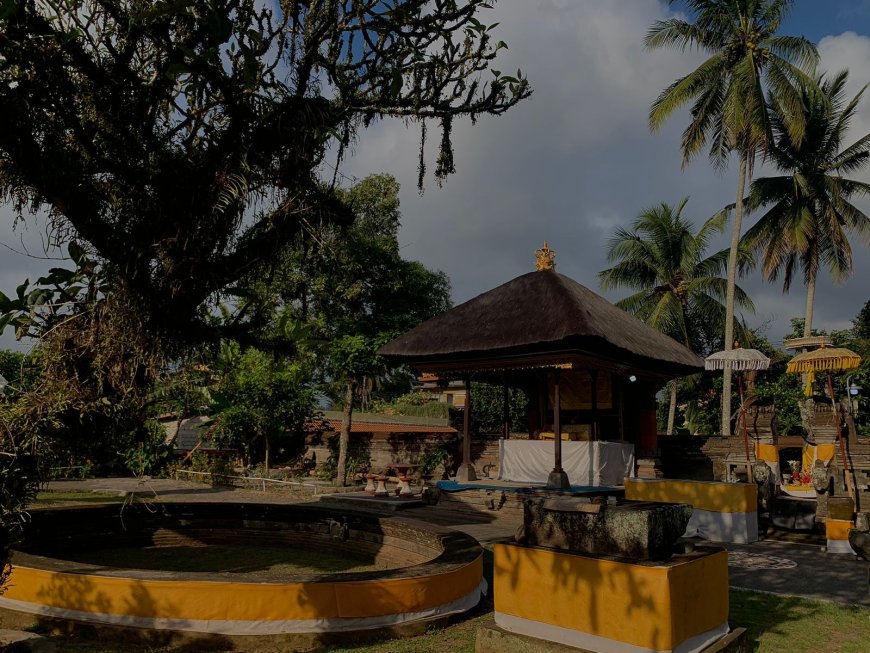
Pusering Jagat Temple is like a stunning cultural and natural gem. The unique architecture, strategic location, peace and elegance make this temple a place full of inspiration and reflection. Apart from that, its role in Balinese culture and traditions makes it a place full of life and full of meaning for local residents and visitors, so it must be kept sacred and preserved for future generations.



















































